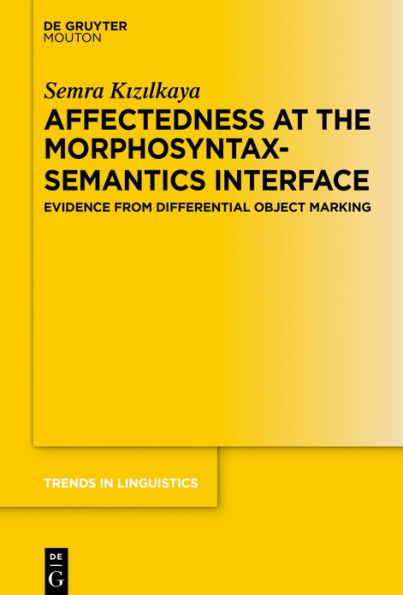The monograph explores the semantic and morphosyntactic representation of affectedness, i.e., the property of an event participant to undergo change, in transitive predicates. Specifically, it provides a first in-depth investigation of how affectedness, the notion of path, and resultativity determine Differential Object Marking (DOM) in Turkish. It argues that affectedness is the crucial event semantic characteristic enhancing DOM, and articulates a theoretical link between affectedness in the lexical syntactic structure and morphological accusative marking. The study addresses affectedness from a cross-linguistic perspective and makes a remarkable contribution to our understanding and modelling of the syntax-semantics interface.
The monograph explores the semantic and morphosyntactic representation of affectedness, i.e., the property of an event participant to undergo change, in transitive predicates. Specifically, it provides a first in-depth investigation of how affectedness, the notion of path, and resultativity determine Differential Object Marking (DOM) in Turkish. It argues that affectedness is the crucial event semantic characteristic enhancing DOM, and articulates a theoretical link between affectedness in the lexical syntactic structure and morphological accusative marking. The study addresses affectedness from a cross-linguistic perspective and makes a remarkable contribution to our understanding and modelling of the syntax-semantics interface.

Affectedness at the Morphosyntax-Semantics Interface: Evidence from Differential Object Marking
220
Affectedness at the Morphosyntax-Semantics Interface: Evidence from Differential Object Marking
220Related collections and offers

Product Details
| ISBN-13: | 9783111311630 |
|---|---|
| Publisher: | De Gruyter |
| Publication date: | 07/01/2024 |
| Series: | Trends in Linguistics. Studies and Monographs [TiLSM] , #387 |
| Sold by: | Barnes & Noble |
| Format: | eBook |
| Pages: | 220 |
| File size: | 2 MB |
| Age Range: | 18 Years |
